What's New
Displaying results 3781 - 3790 of 4914
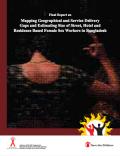
Resource | Publications,
HIV and AIDS as a public health threat do not require rational for continued worldwide attention. Complicated disease transmission cycle, complex human interaction and paucity of reliable data have positioned the issue as primary health concern across the globe. Periodic global data on HIV and AIDS prevalence, incidence and people living with the disease has reported a decline which is primarily attributable to the reduction in incidence.
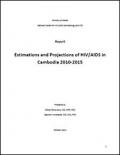
Resource | Publications,
The HIV/AIDS epidemic in Cambodia has been moving into its 20th year after the first case of HIV was identified in 1991. The Royal government of Cambodia, with the financial and technical support from developing partners and civil societies, has actively responded in order to contain the spread of the epidemic. Consequently, the country has successfully brought the HIV prevalence among the general population down to about 0.9% in 2006. And it is also projected that the HIV prevalence will remain stable till 2012 with the prevalence around 0.6%.
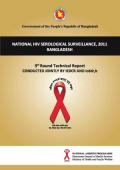
Resource | Publications,
The findings in this report are in general very encouraging as it shows that the overall prevalence of HIV in populations most at risk remains below 1% and most importantly, HIV prevalence has declined among people who inject drugs in Dhaka from 7% to 5.3%. Moreover, hepatitis C has also decline which is a marker for unsafe injecting practices. Thus, the data suggest that our intervention programmes are having a positive effect. Overall the most number of HIV positive people, irrespective of population groups, were in Dhaka despite the decline in the proportion of HIV positives among people who inject drugs.
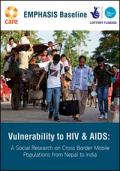
Resource | Publications,
In Nepal, people in low economic brackets with minimal productive means are influenced by the political instability and are likely to migrate. The Nepal Living Standard Survey conducted by the Central Bureau of Statistics in 2003/04 has estimated that one million Nepalese work in India mostly as unskilled permanent or seasonal laborers and domestic workers. According to The Peace and Friendship Treaty signed between India and Nepal in 1950, citizens of both countries can travel and work freely across the border and are to be treated the same as native citizens – except for voting rights. Cross border migrants, due to poverty, lack of legal protection, poor access to services, discrimination and exploitation face many vulnerabilities, particularly related to HIV & AIDS. Data from studies in Nepal estimate that 46% of HIV cases in Nepal were among seasonal migrants to India.
This report presents the findings of a baseline study carried out in India and Nepal for CARE's Enhancing Mobile Population’s Access to HIV & AIDS Services, Information and Support (EMPHASIS) program. This program seeks to reduce the vulnerability of mobile populations to HIV & AIDS along two mobility routes between Bangladesh and India and Nepal and India. The objectives of this study were to understand the vulnerabilities faced by mobile populations by exploring the volume, pattern and drivers of mobility.

Resource | Publications,
A country scorecard has been jointly developed by UNAIDS and partners, to document the status of country implementation and presented to the 28th meeting of the UNAIDS Programming Coordinating Board. The scorecard includes a total of 14 strategic markers, which serve as proxies for the strategic areas included in the Agenda for Women and Girls. A traffic light approach was used, with the following colour code: i) red: not available; ii) orange: available on a project-basis; iii) green: present at national level. A detailed description of the indicators can be found in Annex 3. In addition, data has been collected on the country-level partners (Government, civil society, other development partners and United Nations), to foster mutual accountability. The presented data has been collected through the UN Joint teams, in close collaboration with national partners.
This report provided a visual of the status of country-level undertakings to date, the partners engaged in the implementation of the UNAIDS Agenda for Women and Girls, as well as the areas in need of additional support.
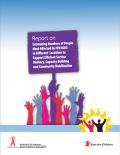
Resource | Publications,
In Bangladesh the first case of HIV was detected in 1989, and since then a total of 1207 cumulative cases of HIV have been confirmed and reported by the end of December 2007. During the last two decades the number of newly identified cases and those with AIDS have been rising steadily. It is estimated that there are 7,500 people living with HIV (PLHIV) in the country. However, the number of people affected by HIV and AIDS includes not only those infected but also their immediate family members, and others in their social network, and these numbers are not known.

Resource | Publications,
The research study highlights economic vulnerabilities as the primary driver of migration from Bangladesh to Mumbai (India) or Kolkata (India). The journey across the border can be a dangerous one and many migrants face harassment, violence, stigma and discrimination and remain at risk of HIV infection.
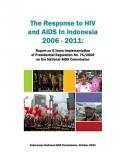
Resource | Publications,
The first confirmed case of AIDS was identified in Indonesia 24 years ago (1987). Between 1987 and 1997 infection appeared to increase slowly. The response was modest and focused primarily in the health sector. In 1994 Indonesia’s first National AIDS Commission was appointed by the President (May) and first National Strategy issued shortly thereafter (June).

Resource | Publications,
This mapping exercise was mainly carried out to identify the services delivery gaps of HIV intervention programs currently operating with street based and hotel/residence based female sex workers (FSW) and also to estimate size of the unserved sex workers in street, hotel and residence settings in 29 districts of Dhaka, Chittagong and Khulna divisions to scale up the HIV essential services and as part of it locations for setting up of DICs can be determined.






